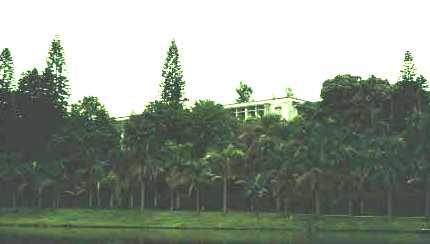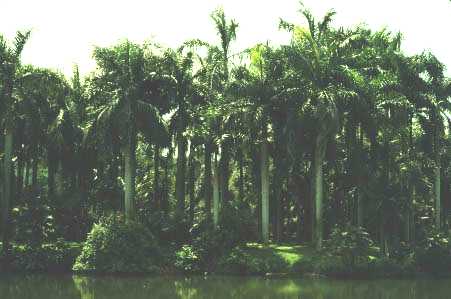Yang Qiner
Hu Chiming

Huang Chengchiu 
| | Introduction | | Treatments | | eFloras | | Images | | Editorial Centers | | Guidelines | | Questions? | | Home | |

Huang Chengchiu 
 The South China
Institute of Botany was established in 1929 as the Institute of
Agriculture and Forestry of Sun Yatsen University. In 1954, it
was transferred to the Chinese Academy of Sciences and its name
changed to the South China Institute of Botany. At present, the
Institute comprises six research departments (plant taxonomy,
plant morphology, plant ecology, plant physiology, plant resources
and plant genetics), a library, an herbarium, a botanical garden:
the South China Botanical Garden, and an Arboretum: Dinghushan
Arboretum, a nature reserve of 1133 hectares containing over 2400
species of vascular plants. Dinghushan was approved by UNESCO
in 1980 as a Man and the Biosphere (MAB) preserve). There are
three ecosystem research stations located at Dinghushan, Xiaoliang,
and Heshan, and a reserve and propagation center of south China's
rare and endangered plants. The South China Botanical Garden covers
300 hectares and contains about 5000 species and varieties of
plants. Of the five hundred and thirty four staff members, three
hundred and thirty eight are scientific researchers and technicians
(senior rank - 74, middle rank - 120). Since 1978, there has been
a graduate program to award masters degrees.
The South China
Institute of Botany was established in 1929 as the Institute of
Agriculture and Forestry of Sun Yatsen University. In 1954, it
was transferred to the Chinese Academy of Sciences and its name
changed to the South China Institute of Botany. At present, the
Institute comprises six research departments (plant taxonomy,
plant morphology, plant ecology, plant physiology, plant resources
and plant genetics), a library, an herbarium, a botanical garden:
the South China Botanical Garden, and an Arboretum: Dinghushan
Arboretum, a nature reserve of 1133 hectares containing over 2400
species of vascular plants. Dinghushan was approved by UNESCO
in 1980 as a Man and the Biosphere (MAB) preserve). There are
three ecosystem research stations located at Dinghushan, Xiaoliang,
and Heshan, and a reserve and propagation center of south China's
rare and endangered plants. The South China Botanical Garden covers
300 hectares and contains about 5000 species and varieties of
plants. Of the five hundred and thirty four staff members, three
hundred and thirty eight are scientific researchers and technicians
(senior rank - 74, middle rank - 120). Since 1978, there has been
a graduate program to award masters degrees.
Main Research Interests and Objectives
Emphasis has been placed on the study of plant systematics and
floristics, plant anatomy, tropical and subtropical forest ecosystems,
physiology of chilling resistance, photosynthesis postharvest
physiology of tropical and subtropical fruits, seed physiology
and regulatory metabolisms, plant tissue culture and cell biotechnology,
exploitation of aromatic and medicinal plants, introduction and
acclimatization of tropical and subtropical plants, theory and
new techniques of plant breeding, and preservation of plant germplasm
resources.
Research Achievements and Technology Transfer
Since 1954, more than 60 books and more than 800 scientific papers
have been published, including such major works as the Flora
of Guangzhou, Flora Hainanica, Vegetation of Guangdong,
and more than 250 scientific achievements have been obtained,
of which the techniques for fast propagation of bananas, cassava
(Cv. 'Nanzhi' 188) and various flowers, serial products
of Aloe, Gynostemma, the production of 821 - a highly
effective and widespread preservative against mildew, and anti-cancer
and analgesic medicines were achieved in recent years.
The Institute has established collaborative research projects with several countries and regions, including Germany, the United States, Japan, Australia, etc. Every year, the Institute receives over 500 foreign experts and visiting scholars and sends abroad more than 20 scientists and researchers for advanced study, to participate in international symposia, and to take part in cooperative research.
Important Herbarium Collections:
Chang Chao-chien, Chen Nian-qu, Chun S. H., Chun Woon-young, Deng
Liang, Ko S. P., Kwok S. P., How Foon-Chew, Huang Cheng, Lau S.
K., Li Xue-gen, Li Ze-xian, Liang H. Y., Liu Nian, Shi Guo-liang,
Sin S. S., Tam Pui-cheung, Tsang Wai-tak, Tsiang Ying, Tso C.
L., Wang Chi, Wang Xue-wen, Zhang Gui-cai.
